Initial analysis and treatment on Lord Ligonier
Sir Joshua Reynolds’ Lord Ligonier 1760 is a life-sized portrait that measures 283 x 238 cm even without its frame, so moving it safely from storage to the studio required a carefully planned operation.

At the Tate Store, the portrait is taken out of its frame, ready for packing
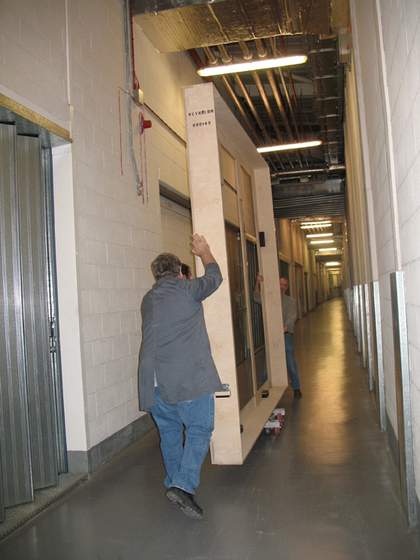
The carrying frame is delivered
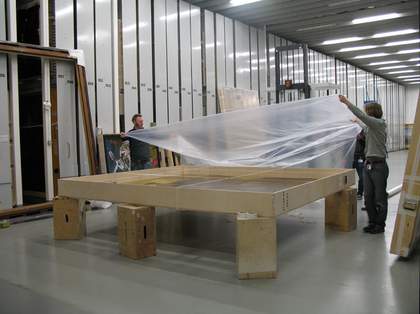
The painting was fitted into the carrying frame and then carefully wrapped by our team of art handling technicians
Transporting Lord Ligonier to the workshop
A carrying frame, made by the conservation workshop, was used to provide physical protection and to keep wrapping materials away from the delicate paint surface. Handles are provided on each side of carrying frames so that the painting itself does not need to be touched or gripped when it is lifted and moved.
After packing, the portrait was transported to the paintings conservation studio at Tate Britain in a vehicle with a temperature-controlled interior and air-ride suspension to minimise all environmental changes and physical shocks. Before treatment began, the painting was carefully photographed and documented to accurately record its condition.
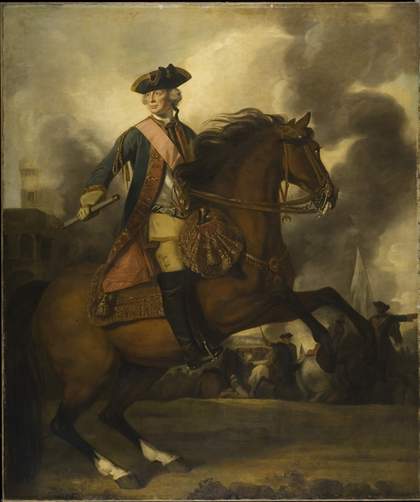
Lord Ligonier by Sir Joshua Reynolds before treatment
Historical research into previous conservation treatments
The painting is covered in a varnish coating which has become extremely discoloured; distorting the colours of the composition and also making the scene appear very flat and one-dimensional.
Records found in the archives at Tate detail its history in the National Collections. The painting was given to the National Gallery by King William IV in 1836 and their records show that it was ‘cleaned and varnished’ in 1884. This treatment was followed by another in 1891 when the well-known restorer Horace Buttery ‘relined, cleaned and varnished’ the painting. The painting was transferred to the Tate Gallery collection in 1919 and, along with the rest of the Tate’s holdings, was later evacuated to Muncaster Castle during World War Two in the hope of escaping damage during the Blitz.
While in Muncaster, cleaning of the portrait was considered but Tate’s technical assistant, John Lee was concerned that removing the varnish and old restoration would reveal many hidden damages which would have to be restored again – a long and complicated job. Instead, he opted for a more minimal treatment, removing dirt from the surface of the painting and then ‘reviving’ it, probably meaning that he polished it with a wax preparation. So the current varnish is the one applied by Buttery 117 years ago.
Testing and removing the top layer of varnish
It is unusual for a painting at Tate to have such an old varnish still in place – its age shows in the level of discolouration: the once clear and transparent coating is now a dark brown.
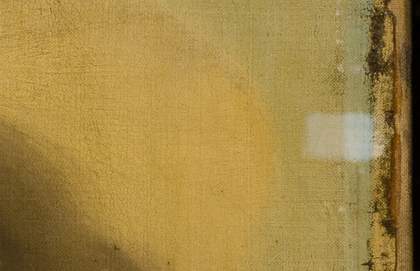
Cleaning test showing a small patch of varnish removed to reveal the paint below
Initial tests showed that the varnish would be relatively easy to remove using a simple mixture of solvents. One of the test sites also revealed that the blue pigment used to paint the sky has faded significantly where the paint has been exposed to light. It remains a bright blue where the very edge of the painting has been concealed behind the frame rebate.
Varnish removal began, starting with the sky area and working methodically down across the paint surface.
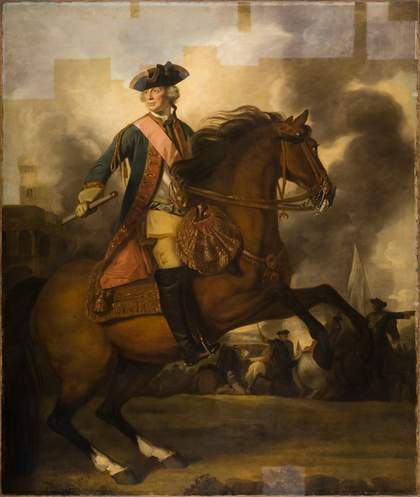
Removal of discoloured varnish from the paint surface, beginning in the upper sky area. Test sites are also visible in this image.
It soon became clear that as well as being protected from light, the margin of paint around the edges of the painting had a bright and clean surface, whereas the central area appeared darkened and slightly glossy once the upper varnish had been removed.
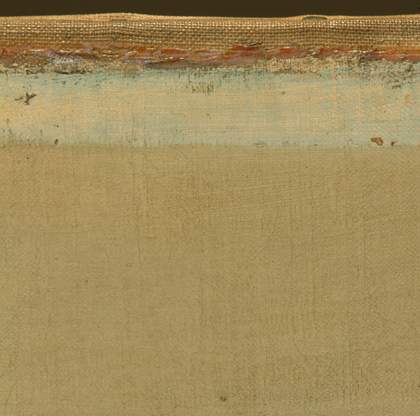
The top edge of the painting, showing the difference in colour between the outer margin, protected by the frame rebate, and the central area.
To investigate the cause of this discolouration, a tiny sample of paint from the affected area was removed and viewed in cross-section under a powerful microscope. A very thin layer of brown material was visible at the top of the sample, i.e. the paint surface, which fluoresced when viewed under ultraviolet light indicating that it contained a natural resin.
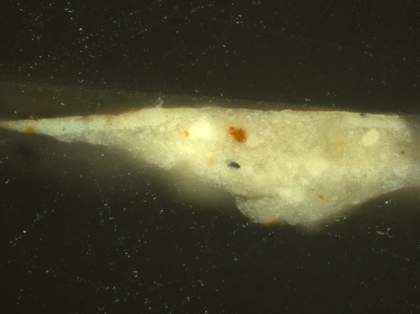
A tiny sample of the paint of the sky seen in cross-section under normal illumination. The surface of the sample at the top appears brown, and the bottom of the sample shows two pale ground, or preparation, layers.
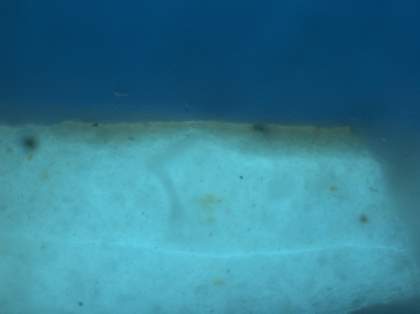
Close-up of tiny sample of the paint of the sky seen in ultraviolet light.
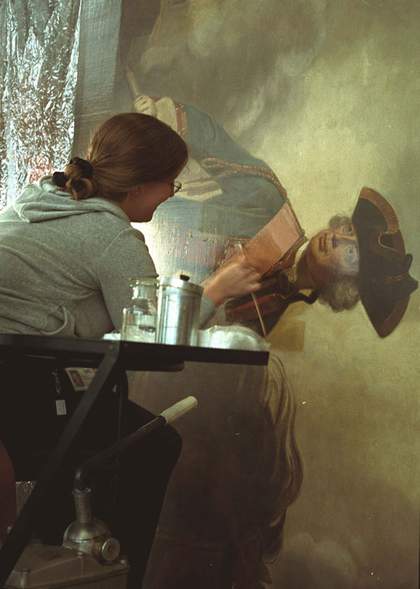
Removing the varnish. A hydraulic chair is useful to work comfortably at height
A second layer of oil varnish
This layer is likely to be the remains of a very old varnish that the previous restorers of the painting failed to remove completely, leaving a thin residue behind on the paint surface. Such a hard, insoluble and dark layer is probably an ‘oil varnish’, i.e. a varnish made by dissolving a hard fossil resin, such as copal, in hot linseed oil.
Oil varnishes were popular in the nineteenth century as people believed them to be more durable and protective than varnishes made from a soft resin dissolved in oil of turpentine. Unfortunately as these oil varnishes aged, they darkened and oxidised, becoming less and less soluble. In the past, restorers might have tried to remove them using very strong solvents or harsh chemical agents but this was difficult to achieve without damaging the paint below. An entry in the National Gallery records from 1859 notes that Lord Ligonier 1760 had a ‘brown oil varnish apparently all over’.
Removing the upper varnish was time-consuming owing to the thickness of the layer and the sheer size of the painting, 6.65 square metres, and took several months to complete.
